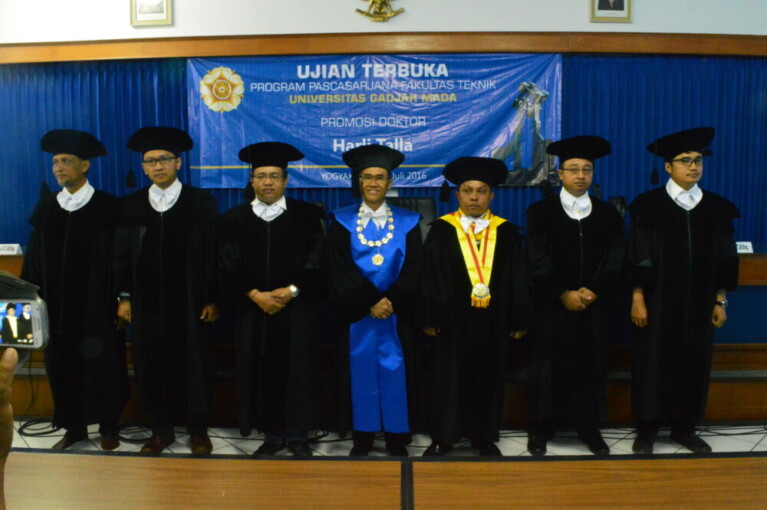
Data from Energy and Mineral Resources Ministry revealed the trend in Indonesia’s fuel decreases from 945 barrels/day in 2010 down to 794 barrels/day in 2014. Such condition necesitates the government to minimise dependence on fuels and find alternative energy, including by liquifying coal. But the conversion process of it has yet to face barriers.
“The problem for the technology to liquifying coal is the unavailability of basic parameters on the characteristics of coal which is suitable to liquefaction technology that produces high conversion,” said Harli Talla during his doctoral promotion at Faculty of Engineering UGM recently.
The conversion process is very complex, influenced by many factors such as characteristics of coal, condition of operation, and catalyst. In his dissertation, Harli studied the characteristics of coals in three formations, Unk formation (North Papua), Balikpapan formation, and Balang island formation (Kutai).
The proximate analysis he conducted showed that the coals in this study have different characteristics in terms of lignite and bituminous, with the lowest rank is Unk formation, the highest being Balang formation. The petrography study informs him the type of coals that have the potential for liquefaction.
“The petrography study of organic coal informs us the potential of each coal type to be converted to liquid products. The low rank coals of Unk and Balikpapan formation have the potential to be liquified,” he said.
The Unk formation has the conversion the highest at 88.97% in 400°C temperature and Balikpapan formation produces low conversion of 84.86% at 425°C temperature.


